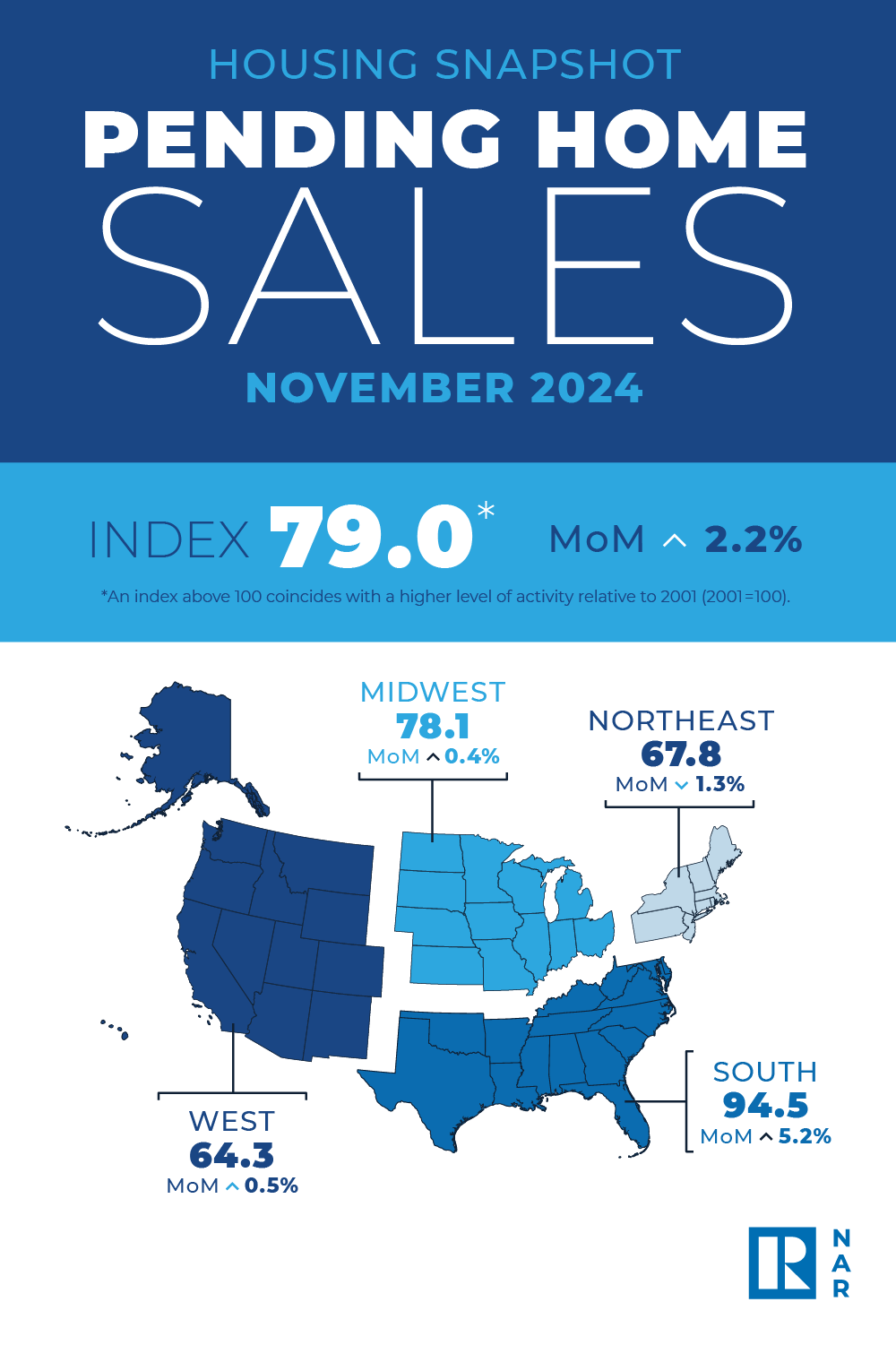Pending Home Sales on the Rise 2024
Downtown Boston Condos for sale
Pending Home Sales on the Rise 2024
November pending home sales top expectations, hitting highest level since February 2023
In its last reading before the end of the year, the National Association of REALTORS® (NAR) Pending Home Sales Index beat expectations in a sign that buyers are taking advantage of increased inventory and no longer waiting for mortgage rates to fall.
Specifically, the index rose 2.2% month over month in November, compared to a consensus estimate of economists for a smaller 0.7% gain. The increase also marks the fourth monthly gain in a row and the highest reading since February 2023.
“Consumers appeared to have recalibrated expectations regarding mortgage rates and are taking advantage of more available inventory,” NAR Chief Economist Lawrence Yun said. “Mortgage rates have averaged above 6% for the past 24 months. Buyers are no longer waiting for or expecting mortgage rates to fall substantially. Furthermore, buyers are in a better position to negotiate as the market shifts away from a seller’s market.”
Pending sales, in which the contract has been signed but the transaction has not closed, are considered a leading indicator and generally precede existing-home sales by a month or two. Year over year, sales were up 6.9%.
“On a regional basis, pending home sales increased month over month in the South, West and Midwest but declined in the Northeast,” First American Deputy Chief Economist Odeta Kushi said. “We find the strongest supply surges in Southern and Western markets but more muted improvements in the Northeast and Midwest. Where supply surges, improving affordability often follows, which may bring buyers off the sidelines, unlocking pent-up demand and reinvigorating market activity in the new year.”
____________________________
Pending-home sales rose for the third consecutive month in February in a hopeful sign that observers said could bode well for the spring selling season.
Specifically, the National Association of REALTORS® Pending Home Sales Index ticked up 0.8% from January. Year over year, however, pending sales were down 21.1%.
“After nearly a year, the housing sector’s contraction is coming to an end,” NAR Chief Economist Lawrence Yun said in a press release. “Existing-home sales, pending contracts and new-home construction pending contracts have turned the corner and climbed for the past three months.”
Regionally, the pending-sales index was up in the South, Midwest and Northeast but down in the West.
“February’s uptick in pending home sales is just one of the green shoots signaling that the housing market is thawing in time for spring home-buying,” First American economist Ksenia Potapov said. “Other leading indicators, including mortgage applications and builder confidence, have also been trending higher.”
Pending sales, in which the contract has been signed but the transaction has not closed, are considered a leading indicator and generally precede existing-home sales by a month or two.
__________________________________________________________________________________________________________________________________-
Our favorite real estate organization, the NAR reported, “pending home sales increased again. Could this be because it looks like we’re near the end of the pandemic?
Pending home sales increased in March, snapping two consecutive months of declines, according to the National Association of Realtors®. All but one of the four major U.S. regions experienced month-over-month gains in March, while each area recorded year-over-year growth.
The Pending Home Sales Index (PHSI),* www.nar.realtor/pending-home-sales, a forward-looking indicator of home sales based on contract signings, rose 1.9% to 111.3 in March. Year-over-year, contract signings jumped 23.3%, with the difference due in large part to the pandemic-induced lockdown in March 2020. An index of 100 is equal to the level of contract activity in 2001.
“The increase in pending sales transactions for the month of March is indicative of high housing demand,” said Lawrence Yun, NAR’s chief economist. “With mortgage rates still very close to record lows and a solid job recovery underway, demand will likely remain high.”
“Low inventory has been a consistent problem, but more inventory will show up as new home construction intensifies in the coming months, as well as from a steady wind-down of the mortgage forbearance program,” Yun continued. “Although these moves won’t immediately replenish low supply, they will be a step forward.”
Existing-home sales are projected to rise by 10% in 2021 to reach 6.2 million in 2021, while the median home price is anticipated to increase by 9% in 2021 to $323,900.
Housing starts are forecasted to reach 1.6 million in 2021 and 1.7 million in 2022, providing much-needed relief to the housing inventory deficit. Mortgage rates are expected to modestly climb higher over the next two years, to 3.2% in 2021 and 3.5% in 2022, as inflation rises due to a stronger economy and higher fiscal spending. The economy is anticipated to expand 4.5% in 2021 and 3.5% in 2022.
